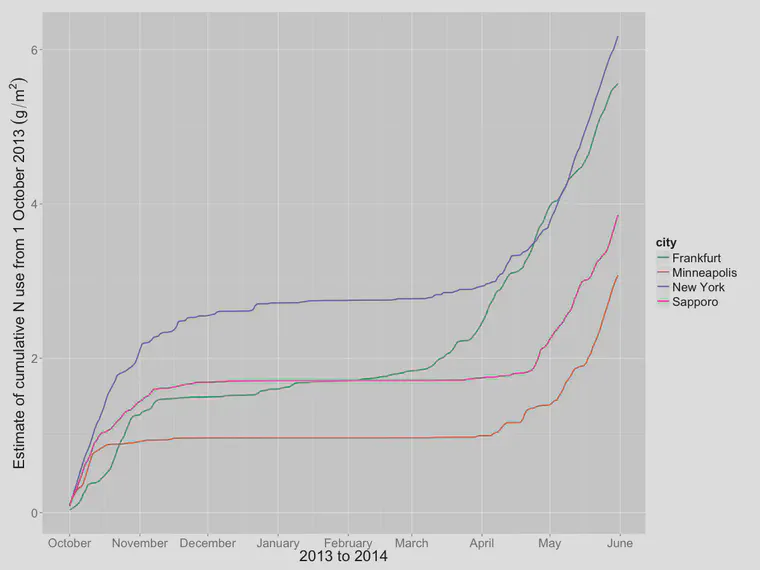Spring reflections on autumn impressions
In the autumn, some turf managers make applications of nitrogen (N) at relatively high rates. Specifically, the applications supply more N than the turf can use at that time – I’m using at that time to mean within the next month after the application date.
Lloyd et al. measured N uptake and turf response to N application with simulated autumn temperatures in controlled environments. They concluded that “some of the widely held views on the importance of fall fertilization may not be as well understood as thought” and suggested that “because of the increased risk of N loss during the fall in humid, temperate regions resulting from seasonally high rates of precipitation and low rates of ET, agronomic recommendations for late-fall fertilization need to be re-evaluated.” In short, adding more N in autumn than can be used by the grass is not a good thing.
Bauer et al. reviewed all the research on this topic and concluded:
This literature review finds that the often cited physiological and agronomic benefits of applying late-fall N applications are poorly supported by peer-reviewed research, with the exception of fall and spring color responses.
And those color responses are not magic. When N is supplied, one expects the grass supplied with N to take on a greener appearance at some time in the future compared to grass not supplied with N. Of course one expects turf supplied with more N in the autumn to have more vigorous growth and a greener color in the spring. But to keep control of the turfgrass growth, and to minimize the risk of N loss, why apply more N than the grass can use at the time?
I wondered, what would happen if the turfgrass growth potential was calculated from autumn to spring, with an estimated N use for each day – if that were done, how far into spring or summer would autumn N apps be expected to have an effect?
This chart shows how these calculations turn out, for four locations: Frankfurt (Germany), Minneapolis, New York, and Sapporo (Japan).

I looked up the daily temperature data at these four cities from 1 October 2013 through 31 May 2014. I calculated the daily growth potential (GP) for the 243 days in that duration. I then estimated the N uptake based on a maximum daily uptake of 0.1 g N m-2 d-1 when the growth potential is at a maximum. Then I plotted the cumulative amount of N that the grass would be expected to use, based on those calculations.
Based on Lloyd’s 2007 survey of autumn N rates, which found the mean value of N applied after 1 October in Wisconsin to be 4 g N m-2, one can look at the chart and see how long that N may have an effect.
Assuming 4 g N m-2 are applied sometime after 1 October, and that none of the N is lost, then with weather conditions that year, it would take until 1 May for all the N to be used at Frankfurt and New York. At Minneapolis and Sapporo, that much N applied after 1 October would not be used by the grass until sometime in June.
To maintain the desired growth rate of turf in the spring, autumn N applications should be considered in terms of how long that N could potentially be used. Why? Because extra N won’t be used as shown in the chart. It will either be lost (to some extent) to the environment over fall and winter and into spring, or it will be used by the grass in a probably undesirable growth flush in the spring, when the grass takes up more N than one would normally want.